“Castillo de Butrón” | History and Architecture
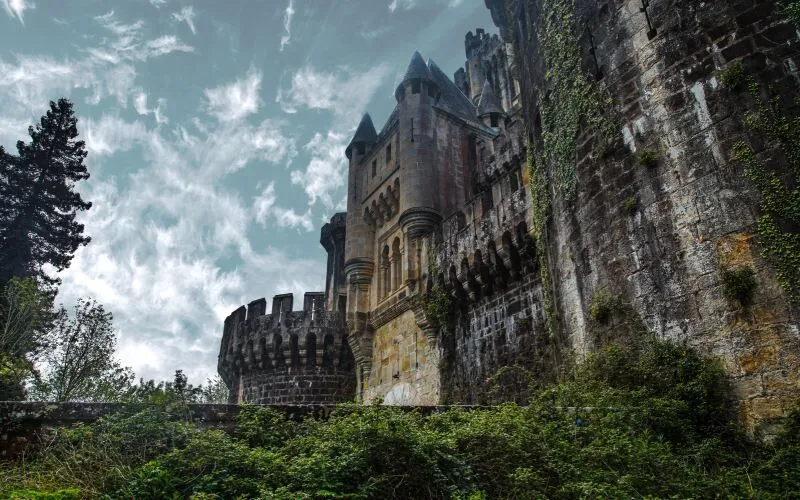
Nestled in the heart of the Basque Country, Spain, Castillo de Butrón is not just a castle; it’s a living history book, an architectural marvel that has stood the test of time. Join us on a journey through centuries to uncover the captivating history of this neo-Gothic gem.
The tale of Castillo de Butrón finds its origins shrouded in mystery. Tradition ties the original tower-house, which served as its foundation, to the 8th century, with Captain Gamíniz as its builder. However, this particular architectural style truly emerged in the 14th century. Considering the rise of the Butron dynasty in the early 13th century, there likely existed a precursor to the castle on the site.

Descendants of the Haro family, who were lords of Bizkaia, and over time, half of the European royal houses, the Butróns played a significant role in the Bandos Wars. These brutal conflicts ravaged the Basque provinces from the 13th to the 15th century, pitting two sides against each other, the Oñacinos and the Gamboínos. The Butróns aligned with the former, and the entire region suffered as a result.
Nobles from both sides engaged in violent clashes, often massacring innocent civilians caught in the crossfire. While not always full-scale battles, these conflicts resembled mafia wars, with each faction vying for economic and social dominance in the Basque Country.
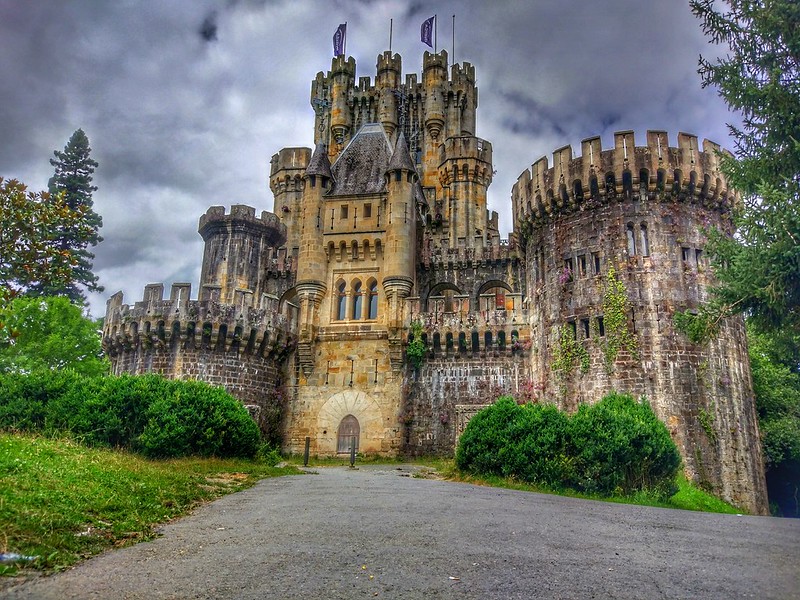
These chaotic times sowed the seeds of the Brotherhoods, which, in turn, gave rise to the Provincial Councils. These entities sought to bring an end to the perpetual strife. However, powerful tower houses like Castillo de Butrón secured the positions of the banderizos. This castle, fortified with thick walls and featuring an impressive complex of forges, played a pivotal role.
For centuries, the Butróns were gradually assimilated into the Castilian aristocratic system and faded from prominence by the 18th century, with Plentzia becoming their primary seat of power. Interestingly, their name is likely derived from fishing gear depicted on their coat of arms.
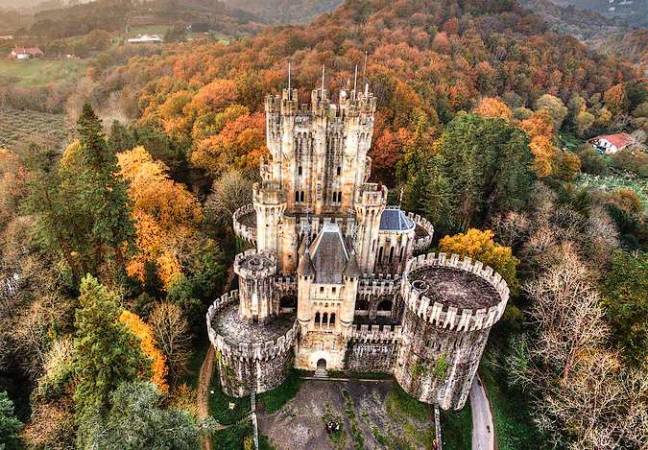
In the mid-19th century, the medieval fortress came into the possession of the 7th Marquis de la Torrecilla, Narciso de Salabert y Pinedo. It was under his patronage and that of his Biscayan holdings that Castillo de Butrón underwent a remarkable transformation. He enlisted the services of the esteemed architect Francisco de Cubas, known for his role as Madrid’s mayor and the design of the Almudena Cathedral, to reimagine the castle.
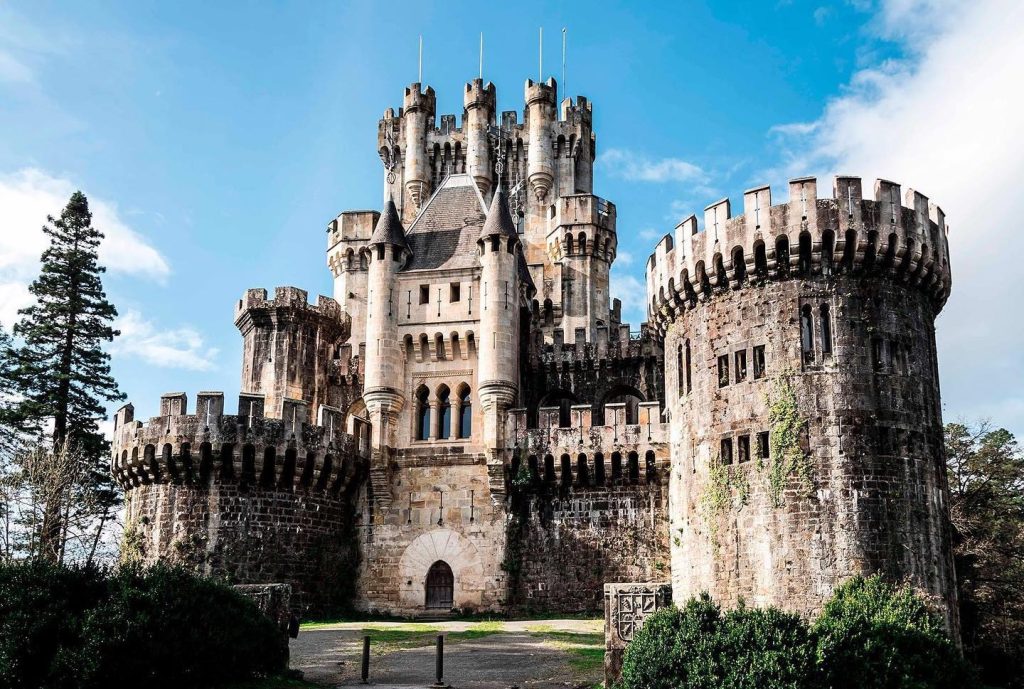
While preserving medieval elements, Marquis de la Torrecilla’s vision was radically different from the castle’s original form. The neo-Gothic style predominated, enriched with influences from Central and Northern Europe, akin to Spanish cities like Segovia with its Alcázar. Over time, the structure took on its distinctive form.
The castle’s layout is marked by four imposing bastions at each corner, their rounded and sturdy appearance contrasting with the keep and front facade. Elaborate and adorned with spikes and openings, they lend a fairytale aura to the castle, evoking the sense of stacked watchtowers. Furthermore, the spaces are often connected in ways more aesthetically pleasing than practical, such as through exterior passages, underscoring the palace’s focus on aesthetics over functionality.
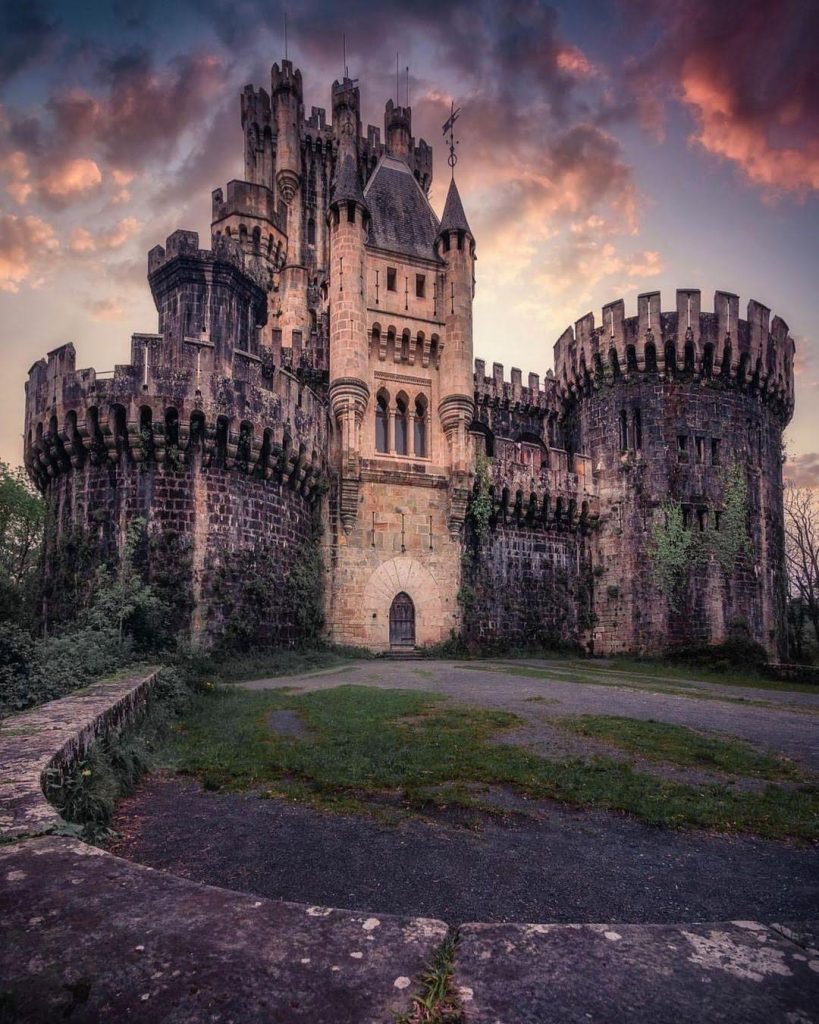
The dominance of its unique design made the castle less suited for practical habitation. While it served as a residence, it lacked the comforts of a conventional home. Some towers featured walls over four meters thick, leading to small, hard-to-reach rooms. Despite its undeniable allure, the castle remained without a permanent owner.
Throughout the 20th century, it changed hands multiple times, eventually falling under the ownership of a business conglomerate. Now part of the municipality of Gatika, the castle has been on the market for years without finding a new proprietor. At one point, it was even put up for auction. Valued at several million euros and declared a protected heritage site, its most recent use was for gatherings and celebrations until the turn of the millennium.
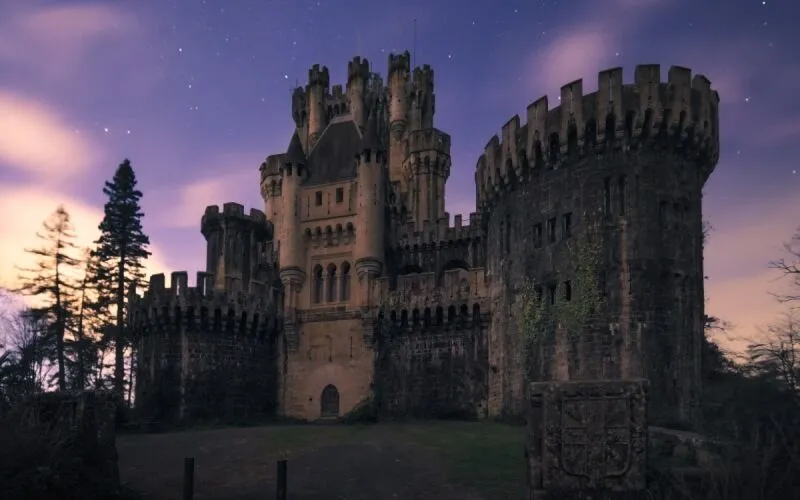
Since then, Castillo de Butrón has stood in silence. The once-white stone bastions have darkened over time, and the lush garden that surrounded it, once adorned with palm trees, has fallen into disrepair.
However, the lush greenery of the surroundings enhances the magical aura of Castillo de Butrón, making it a popular destination for tourists, despite restricted access to the interior. The castle’s location, easily accessible via the A-8 highway and nestled between Bilbao and Bermeo, places it in proximity to other noteworthy sites, such as San Juan de Gaztelugatxe.
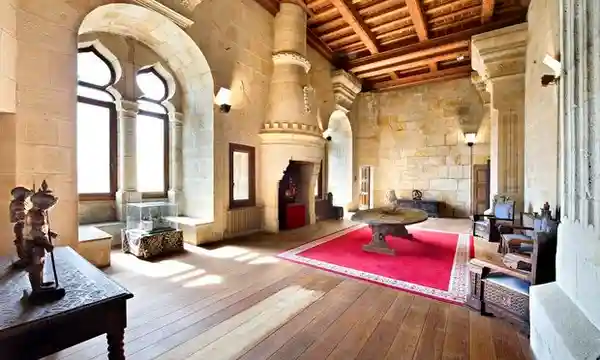
For those seeking a memorable experience, consider embarking on a circular route connecting Castillo de Butrón to the seafaring town of Plentzia. The route spans roughly 14 kilometers, offering a delightful journey through the picturesque Basque coastal landscape. Additionally, a stroll between the castle and the charming inland town of Gatika is well worth the effort.
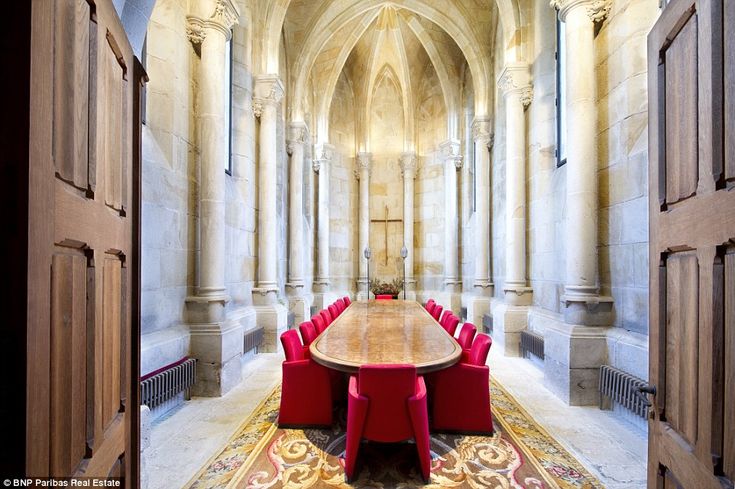
In conclusion, Castillo de Butrón may have witnessed centuries of change and neglect, but it continues to enchant visitors with its spellbinding fairytale ambiance. It’s a place where history and architecture intertwine, offering a glimpse into the intricate past of the Basque Country.